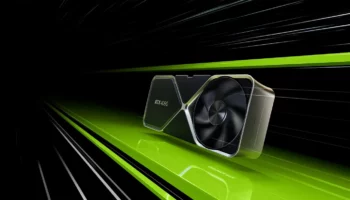Assassin’s Creed: Mirage is out across all major platforms, giving gamers a glimpse into 13th-century Baghdad, the heart of the Abbasid Caliphate. We tested the Anvil based-title using the latest NVIDIA and AMD graphics cards across 1080p, 1440p, and 4K, and have compiled the results below. Ubisoft’s latest game requires relatively modest hardware with the official PC Specs recommending a GeForce RTX 3080 (10GB) or a Radeon RX 6900 XT (16GB) for 4K Ultra.
The CPU requirements settle for a Rocket Lake-based Core i5-11600K, a midrange chip from 2021. Alternatively, a hex-core Ryzen 5 5600X will also suffice. You’ll need 16GB of dual-channel memory for optimal performance, plus 40GB of SSD storage.
Test Bench
- Motherboard: ASUS Z790 Maximus Hero.
- CPU: Intel Core i9-13900KF.
- Memory: 16GB x2 @ 6000MT/s CL38.
- PSU: Corsair RM1000e.
Assassin’s Creed Mirage 1080p GPU Benchmarks
Assassin’s Creed Mirage runs pretty well across most GPUs. The $399 GeForce RTX 4060 Ti nets an average of 106.7 FPS at 1080p with 1% and 0.2% lows of 84 FPS and 35.5 FPS, respectively. Despite being the pricier option ($449), the Radeon RX 7700 XT falls behind the RTX 4060 Ti with a 10% delta in between.
At the higher end, the GeForce RTX 4090 finishes first with a 178 FPS average at 1080p and a 1% low of 124 FPS. The GeForce RTX 4080 comes in second, averaging 164.7 FPS with lows of 122 FPS and 34 FPS, respectively. Interestingly, the Radeon RX 7900 series GPUs performed the same with the 7900 XTX producing lower lows. Both average over 130 FPS with 0.2% lows of 22.8 FPS for the XTX.
According to the frametime variability graph, the RTX 4090 offers the smoothest performance, followed by the RTX 4080 and the RX 7900 XT. The RX 7900 XTX has the worst frametimes, right there with the RX 7700 XT. Regardless, all six GPUs face occasional stuttering (time deltas of over 8ms and 12ms), especially the Radeons.
Assassin’s Creed Mirage 1440p GPU Benchmarks
At 1440p, the game becomes more GPU-bound, but the standings in the chart remain unchanged. The GeForce RTX 4090 comes out on top with an average frame rate of 161.6 FPS and a 0.2% low of 66 FPS. The RTX 4080 is the second-fastest GPU with averages and 0.2% lows of 135.6 FPS and 56.8 FPS, respectively.
The Radeon RX 7900 XTX and 7900 XT continue to perform the same at 1440p, with notably worse lows for the former. They average 113.6 FPS and 111 FPS with 1% lows of 86 FPS. Down the chart, the GeForce RTX 4060 Ti continues to lead the RX 7700 XT with an average of 81 FPS and 1% lows of 65 FPS.
The frametime variance graph is the same as before. The Radeon RX 7900 XTX performs better but faces worse lows than the 7900 XT. The Radeon RX 7700 XT delivers more consistent frametimes than the RTX 4060 Ti with higher 2ms deltas and lower >12ms deltas. Unfortunately, the periodic stuttering persists across all GPUs.
The Radeon RX 7900 XT runs into a fair bit of stuttering in the first half of the benchmark but performs roughly the same as the RTX 4080 in the latter half.
Assassin’s Creed Mirage 4K GPU Benchmarks
The game is fully GPU-bound at 4K, with all six cards producing playable frame rates. The GeForce RTX 4090 nets an average of 111.7 FPS and 89.6 FPS 1% lows. The RTX 4080 falls short of the 100 FPS mark, averaging 88 FPS with 1% lows of 73 FPS.
The Radeon RX 7900 XTX leaps past the 7900 XT with an average of 76 FPS and a 1% low of 60.6 FPS. At the lower end, the RTX 4060 Ti and the RX 7700 XT average close to 45 FPS, with the former producing notably better lows.
All four higher-end cards produce mostly smooth graphs with a bit of micro-stuttering. As explained above, this is more pronounced in the case of the Radeons, most notably the RX 7700 XT. The RTX 4080 and 4090 offer the smoothest experience with the least stuttering.
The GeForce RTX 4090 has more prominent but fewer stutters, while the Radeon RX 7900 XTX faces intermitted, mild stuttering throughout the benchmark.
CPU Bottleneck?
The NVIDIA cards exhibit some strange behavior. A look at the “GPU Busy” times reveals an interesting anomaly. At several points during the benchmark, the game appears CPU-bound while the GPU idles. These are very brief but consistent throughout the test. Even more peculiar is that the intensity is much higher at 1440p and 4K, while 1080p is largely free of it.
This behavior can only be reproduced on NVIDIA cards, indicating that this is likely the result of a driver overhead. We’re yet to get GameReady drivers for Mirage.
Power and Efficiency
In terms of power efficiency, the GeForce RTX 40 series GPUs are in a class of their own. AMD’s Radeon RX 7000 cards are power-hogs, with the 7900 XTX peaking at 413W. The considerably more powerful RTX 4090 tops out at 366W and the still faster RTX 4080 doesn’t go past 244W.
The GeForce RTX 4060 Ti consistently beat the Radeon RX 7700 XT at all three resolutions. It does so while sipping only 66% as much power. The former tops out at 136W while the latter goes as high as 214W under heavy load.





